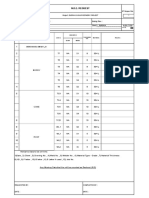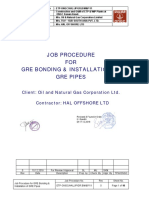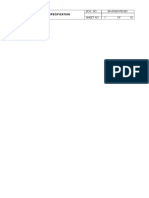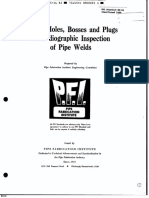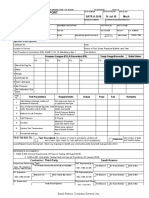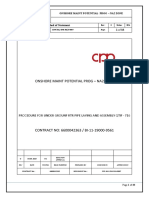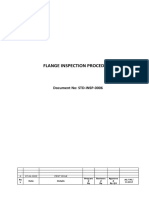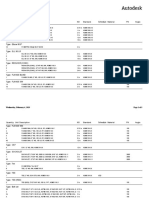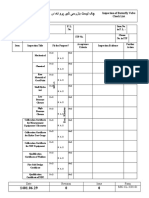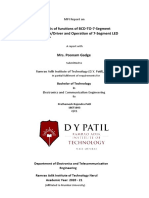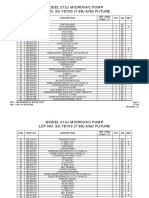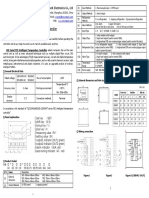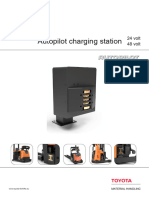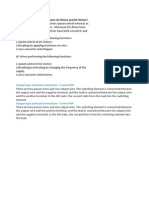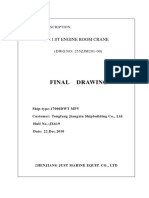2) Equipment purchaser shall have specified to equipment vendor that oil mist preservation will be utilized on the
equipment.
3) Cavities not normally mist lubricated during permanent operation will need to be fitted with supply and vent
connections (typically NPS 1/4).
b) The oil mist system shall be designed and sized for preservation service.
1) As a minimum the mist generator shall be equipped with the following instrumentation: air pressure regulator,
pressure relief valve, level gauge, and mist pressure gauge.
2) The mist header system shall be NPS 2 minimum galvanized schedule 40 pipe properly supported and sloped.
3) Mist flow to each application point can be less than that required for lubrication during normal operation.
4) Plastic tubing (temporary use only) can be used to connect from the mist header to the application point.
c) The oil used in the mist system shall be a good quality, paraffin-free turbine oil. A temperature sensitive, vapor
emitting oil should not be used in the oil mist system. Equipment preservative oils shall be compatible with the system
elastomers and the oil used in the oil mist system to eliminate the need to disassemble and remove the preservative oil.
d) All machinery shall be connected to the system immediately upon arrival on site.
e) Equipment is maintained in the storage yard by rotating shafts and periodically draining condensed oil from the
housing.
NOTE Oil shall not be drained to ground.
f) For equipment that will be permanently oil mist lubricated, the movement of equipment from the storage yard to
permanent locations shall be coordinated so that the maximum outage of mist preservation is minimized.
2.4 Lubricants and Preservatives
2.4.1 The table and notes in Annex A describe some of the physical characteristics, application methods, and life
expectancies of preservative Type A, Type B, Type C, and Type D that are referred to in this practice. Final selection
types shall be approved by the equipment manufacturer and user. Other methods of preservation not listed on the
table include: vapor corrosion inhibitor (VCI), nitrogen purge, and desiccants.
2.4.2 Care shall be taken to ensure the compatibility of the preservative with elastomeric parts, seals, gaskets, and
so forth.
2.4.3 All lubricant and preservative material safety datasheets (MSDSs) shall be available, and associated hazards
reviewed with all personnel handling and using these materials.
2.4.4 The term desiccant shall mean silica gel or any other approved water absorbing material. All desiccants shall
have prior approval from the manufacturer or the user-designated representative. Check desiccant monthly.
Replacements shall be approved by the user.
2.4.5 Preservatives shall not be used on surfaces where prohibited by process application.
2.4.6 In succeeding sections, references are made to removing preservatives before the machinery is placed in
service. This is always true for Type D preservative. However, with the proper selection of Type A, Type B, and
Type C, removal can be eliminated. The preservative would need to be compatible with the permanent lubricating
fluid, the process fluid, and materials of construction, that is, elastomers. The preservative shall also be inspected to
be sure that it has not absorbed any abrasive dust or contaminents.
2.4.7 VCIs provide a self healing barrier between the metal surface and moisture. All VCI’s shall have prior approval
from the manufacturer or the user-designated representative. Note that some VCIs may contain nitrites which attack
copper and bronze.
2.4.8 Nitrogen purging provides protection by removing the moisture laden oxygenated atmosphere. Care should
be taken when working with nitrogen to prevent asphyxiation.
2.5 Bolts
2.5.1 All loose assembly bolts, nuts, and fasteners shall be packaged, identified, and stored in a sheltered area.
2.5.2 Type B or Type C preservative shall be applied to the threaded portion of all anchor bolts, washers, and nuts
that are not galvanized or plated.
2.6 Spare Parts, Special Tools, and Miscellaneous Loose Items
2.6.1 Items purchased as spare parts shall be tagged and handed over to the user-designated machinery
representative upon receipt and completion of jobsite receiving inspection per 2.2.
2.6.2 Storage and protective maintenance of miscellaneous loose items shall be as directed by the manufacturer.
2.6.3 Extra drawings and manuals shipped with the equipment shall be saved and handed over to the user.
NOTE Formal distribution of these types of documents should have occurred before shipment per 2.1.1.
2.6.4 Special tools shall be kept by the installer until work has been completed, then turned over to the userdesignated
machinery representative.
2.7 Auxiliary Components for Rotating Equipment
The following applies to auxiliary piping that is shipped loose for field assembly.
2.7.1 Pipe Components
Carbon steel pipe components that will require long-term storage outdoors during the construction period shall be
coated externally and internally with thinned Type B or a Type C preservative, unless prohibited by process application.
2.7.2 Coating and Sealing
2.7.2.1 Stainless steel pipe components that will require long-term storage outdoors in a salt water atmosphere
during the construction period shall be coated externally and internally with thinned Type B or a Type C preservative,
unless prohibited by process.
2.7.2.2 Contamination of dry gas seals may occur if Type B or Type C preservatives are used in gas seal supply
piping. A VCI that can be removed prior to operation, may be an acceptable alternative.
2.7.3 Flanges
2.7.3.1 Flanges received bolted face-to-face need not be separated for inspection; however, the face-to-face
crevice shall be coated with Type A, Type B, or Type D preservative prior to outdoor storage.
2.7.3.2 After inspection of loose flanges, flange gasket surfaces shall be coated with Type A, Type B, or Type D
preservative prior to outdoor storage. Flanges for prefabricated piping
